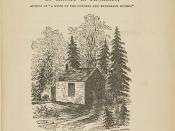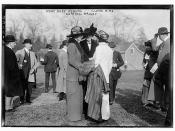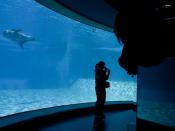Henry David Thoreau stated, " The mass of men lead lives of quiet desperation." The quiet desperation that Thoreau speaks of is the drive from within to be something more and yet be almost nothing at all. He believes that to obtain personal success that you must separate yourself from society and civilization. Men who are not at this stage in life where they are free from the society that binds you are secretly desperate to break from the norm and are really unhappy with their lives, even though they may seem perfectly happy. Both Eugene O'Neill's "Long Day Journey into Night" and Ralf Ellison's "Invisible Man" expresses this theory through the lives of the characters in each of the novels.
In the novel "A Long Day's Journey into Night," the characters are very well drawn out for the reader. You see each member of the family as an individual with their own outlooks and ideas on life.
Mary is a loving wife and mother and a morphine addict, Tyronne is an old actor who loves his wife very much, Jamie is a son of Mary and Tyronne who has a preconception that people will judge him if they see him doing yard work and loves to drink, and Edmund, another son of Mary and Tyrone, is very intelligent but also loves to drink.
With all of these individual traits, they still all have some underlying things in common with each other. One is that they all have a vice, some kind of addiction that they cannot break. Mary's is the most obvious. Her addiction to morphine is the most visible. Her hands shake and she visibly shows signs of an addiction. Tyronne, on the other hand has two addictions. His addiction to Real Estate is somewhat different...


